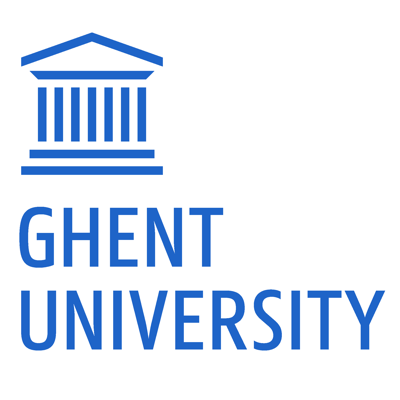The Project
 Commercialization of the Quenched and Partitioned (Q&P) steels to a large extent is currently limited by the lack of knowledge on their application related performance properties. The OptiQPAP project (Optimization of QP steels designed for industrial applications) addresses optimization of performance properties of the Q&P steels for their application in automotive industry.
Commercialization of the Quenched and Partitioned (Q&P) steels to a large extent is currently limited by the lack of knowledge on their application related performance properties. The OptiQPAP project (Optimization of QP steels designed for industrial applications) addresses optimization of performance properties of the Q&P steels for their application in automotive industry.
The OptiQPAP project aims to deliver tools to optimize performance properties of Q&P steels while retaining their high mechanical strength via intelligent microstructural design. In other words, the microstructural design in Q&P steels will be carried out with the aim to improve various properties of different character (i.e. basic tensile properties and application-driven properties) simultaneously.
The objectives of the OptiQPAP project include:
- To gain fundamental knowledge of the principles of microstructural design for engineering of Q&P steels exhibiting a combination of enhanced performance properties with improved mechanical strength.
- To establish the relationships between microstructural features of Q&P steels and various performance properties, such as fatigue, wear, weldability, crash behavior, etc.
- To establish the microstructure – properties relationship in the steels in the form of analytical and multi scale models precisely predicting properties of Q&P steels.
- To develop new AHSS design concepts with combination of improved performance properties (fatigue, wear, weldability, crashworthiness, etc.) and enhanced mechanical properties (strength, ductility and strain hardening) for their application in the automotive sector.
- To improve the industrial applicability of the Q&P process via optimization of performance properties in Q&P steels and to develop a controlled and reproducible process for their manufacturing.
- To create methods for future development of new Q&P grades with improved mechanical and performance properties while requiring a minimum of trial and error procedures.
News & Events
Publications
- A. Smith, F. Vercruysse, R. Petrov, P. Verleysen. The effect of Niobium on Austenite Evolution during Hot Rolling of Advanced High Strength Steel. Journal of Physics: Conference Series. 1270 (2019) 012030. DOI: https://doi.org/10.1088/1742-6596/1270/1/012030
- Celada-Casero, C. Kwakernaak, J. Sietsma, M.J. Santofimia. The influence of the austenite grain size on the microstructural development during quenching and partitioning processing of a low-carbon steel. Materials and Design 178 (2019) 107847. DOI: https://doi.org/10.1016/j.matdes.2019.107847
- J. Hidalgo, C. Celada-Casero, M.J. Santofimia. Fracture mechanisms and microstructure in a medium Mn quenching and partitioning steel exhibiting macrosegregation. Materials Science and Engineering A, 754 (2019) 766-777. DOI: https://doi.org/10.1016/j.msea.2019.03.055
- C. Celada-Casero, J. Sietsma, M.J. Santofimia. The role of the austenite grain size in the martensitic transformation in low carbon steels. Mater. Design, 167 (2019) 107625.
- Xia, F. Vercruysse, R. Petrov, I. Sabirov, M. Castillo-Rodriguez, P. Verleysen. High strain rate tensile behavior of a quenching and partitioning (Q&P) Fe-0.25C-1.5Si-3.0Mn steel. Materials Science and Engineering A 745 (2019) 53-62.
- Xia, I. Sabirov, J. Molina-Aldareguia, P. Verleysen, R. Petrov. Mechanical behavior and microstructure evolution of a quenched and partitioned steel during drop weight impact and punch testing. Materials Science and Engineering A. 737 (2018) 18-26.
- C. Celada-Casero, P. Kok, W. Spanjer, J. Sietsma, M.J. Santofimia. Analysis of the Microstructure-Properties Relationships of a Quenching & Partitioning Steel: Effect of the Prior Austenite Grain Size. In Proceedings of the 5th International Conference on Steels in Cars and Trucks (SCT2017), 18-22 June, 2017, Amsterdam, The Netherlands, article 114.
- A. Smith, L. Bozzetto. Segregation in quenched and partitioned steels: The role of hot rolling parameters. In Proceedings of the AISTech 2017 Conference, 8-11 May, 2017, Nashville, USA, pp. 301-313.
Partners and people

IMDEA Materials Institute (IMDEA) is a non-profit research institute (~100 employees) devoted to carry out research in Materials Science and Engineering in Madrid (Spain). IMDEA is committed to the excellence in research and to foster technology transfer to the industrial sector. IMDEA holds a well-established international reputation in the areas of processing, microstructural analysis, characterization and multiscale modelling of advanced materials for applications in transport, energy and information technology as well as on the exploration of emerging materials and processes for sustainable development. Research activities and technology transfer to industry at IMDEA is carried out within the framework of research projects funded by national or international organizations or directly through contracts with industry.

Fundació Eurecat (EURECAT) is the result of the merging process of the main Catalan Technology Centres, a process which started in 2015 and still ongoing which counts already with the sum of capacities of seven originals Centres and beyond.Eurecat is currently the leading Technology Centre in Catalonia, and the second largest private research organization in Southern Europe. Eurecat manages a turnover of 57M€ and 650 professionals, is involved in more than 160 R&D projects and has a customer portfolio of over 1.000 companies.Eurecat is currently participating in more than 70 EU funded collaborative projects, mainly in the Horizon 2020 Programme. In addition to this wide experience at European level, Eurecat is also a strong player in the various R&D programmes sponsored by the Spanish and Catalan administrations, with more than 160 ongoing projects. Technology transfer is also an essential activity in Eurecat, with 36 international patents and 9 technology-based companies (eight in Spain and one in Latin America) started-up from the centre.
Eurecat R&D, innovation and training activities span from Industrial Technologies (metallic, plastic and composite materials, manufacturing processes, autonomous and professional robotics, functional printing and fabrics, simulations and sustainability) to Digital Technologies (Digital Humanities, Big Data Analytics, IT Security and Smart Management Systems, e-health, data mining and multimedia technologies) and Biotech (Omic science and Nutrition & health). Additionally, EURECAT has been accepted by the European Commission as a KETs (Key Enabling Technologies) Technology Centre in order to collaborate with SMEs on close-to-market research and innovation activities.

ThyssenKrupp Steel Europe AG (TKSE) is a major European integrated steel producer, producing annually approximately 12 million tonnes of flat steel products, achieving a turnover of 9 M€ and employing approximately 26.000 people in the fiscal year 2013/2014. Production concentrates on flat products of different steel grades (heavy plates, hot strip, uncoated, metal-coated and coil coated steel sheet, and semi-finished products, e.g. tailored blanks). The investigations in this project will be carried out by the Research and Development (R&D) of TKSE, which is among the largest and most comprehensively equipped research institutions in Europe. The scientific staff has vast experience in manufacturing of steels with complex production routes.

Universiteit Gent (UGENT) has more than 30,000 students. The expertise of the Department of Materials Science and Engineering (more than 60 persons) lays in the areas of Metals Science and Technology (MST) and Mechanics of Materials and Structures (MMS). The research is performed in close collaboration with industrial and academic partners and addresses materials engineering problems of an applied nature, but rooted in the fundamental understanding of materials behaviour. The activities of the MST-group are closely related to the presence of a vast amount of logistic and experimental facilities for manufacturing (including a HD simulator…), mechanical testing (including split Hopkinsion bar facilities) and thorough microstructural characterisation (e.g. E-SEM, HR-TEM). The entire chain of metallurgical research can be done in-house, which offers a truly unique environment for an academic research facility. One of the specialised research fields is the investigation and characterisation of microstructures by means of phase/orientation contrast microscopy (EBSD).

Centro Sviluppo Materiali (CSM). CSM is a private company and leading centre for applied research founded in 1963. Its R&D activities mainly focus on the modelling and design of materials and products, the development of innovative pilot plants and reduction of environmental impact. In particular, CSM has extensive experience on high temperature materials and on their analysis methodologies and testing. CSM has also a large experience in the coordination of EU funded projects.

The investigation at Technische Universiteit Delft (TUDELFT) will take place in the research group “Metals Processing, Microstructure and Properties” (MPMP) led by Prof. Jilt Sietsma, in the Department of Materials Science and Engineering. The general mission of the MPMP group is the development of a physical basis for industrial processes in which the metallic microstructure is formed or changed, focusing on solid-state processes in the bulk of the material. The research in the group includes phase transformations, precipitation, microstructural aspects of plastic deformation, recovery and recrystallisation and texture development of metallic materials, with special emphasis on steels. Studies are made of the process kinetics and the microstructures in terms of phase fractions, morphology and spatial distribution, grain size (distribution) and orientation distribution (texture). The group has access to a wide range of in-house experimental equipment, including a magnetometer for measurement of austenite fractions, but also to Atom Probe Tomography and Neutron Diffraction and Small Angle Scattering. The group has a broad experience with diffraction studies using synchrotron radiation. For the physical underpinning of the research, thermodynamic database programmes like Thermo-Calc and kinetic models like Molecular Dynamics and Phase-Field Modelling are being employed.

TATA steel Nederland Technology (TATA) belongs to the Tata group, which is one of the world fastest-growing and most reputable corporations. The Tata Steel Group belongs to the top 12 global steel producers. In Europe it is the second largest steel producer, which serves the most demanding markets. The IJmuiden Technology Centre, which is the main research centre of the steel group, participates in this project. On this site, which is one the leading steel research centers in Europe, many researchers are working in a project organization. It is organized in several departments. Relevant for this project are the Metallurgical department, the Automotive application department and the Materials characterization department. Every department has a broad range of experimental facilities where experienced researchers and skilled technicians perform many investigations or tests. Depending on workload and peak load extra people can be allocated to a project in order to reach milestones and deliverables. Relevant to this proposal are the experimental facilities of the characterization department, which has several electron microscopes (equipped with EBSD and image analysis software), microprobe, 3D roughness instrument and many light microscopes. Also relevant are the facilities within the Automotive application department. In a large hall many facility sites are available for testing mechanical properties and performance, such as a deep drawing press, tensile testing machines, 3D measurement optical systems, cup drawing machine, crash tower, dynamic impact testing facility etc. Specific for joining investigations are available equipment for laser welding and cutting, arc welding, resistance welding and mechanical fastening.
Funded by
The OptiQPAP project has received funding from the European Union’s Research Fund for Coal and Steel under grant agreement nº 709755



